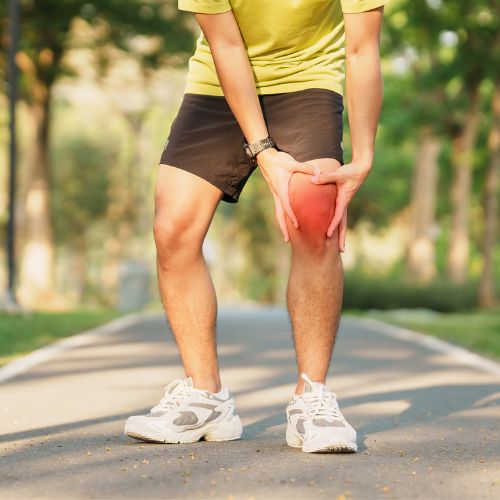Minimally Invasive Cellulite Treatment: Cellulite is more common than most people realize. Over 90 percent of women and a smaller number of men will notice dimples on their thighs, hips, or abdomen at some point. It isn’t a sign of poor health, and it doesn’t mean you’re not fit. It’s simply how fat pushes against connective tissue beneath the skin.
For years, the only solutions promoted were invasive treatments or even surgery, but that’s not what most people want today. The focus has shifted toward safer, minimally invasive cellulite treatments and completely non-surgical options that smooth the skin with far less risk and downtime.
In this guide, you’ll learn what causes cellulite, how traditional treatments compare to newer approaches, and where innovative therapies like red light therapy fit into cellulite reduction.
What Is Cellulite and Why Does It Appear?
Cellulite is the term used for the dimpled or uneven look that appears when fat beneath the skin pushes against bands of connective tissue. These bands pull the skin down while the fat presses up, creating that familiar “orange peel” texture. It’s most noticeable on the thighs, buttocks, hips, and abdomen, but it can show up in other areas too.
Why does cellulite happen? Genetics play a big role, which is why some people notice it early while others barely see it. Hormones also influence how fat is stored and how connective tissue develops, which explains why women experience cellulite more often than men. Circulation matters as well, since reduced blood flow can make tissue less elastic over time.
Lifestyle choices don’t cause cellulite on their own, but they can make it more or less visible. A balanced diet, regular movement, staying hydrated, and keeping muscles strong can all help support skin health. On the flip side, high sugar intake, long periods of sitting, and dehydration may make cellulite look more pronounced.
Cellulite isn’t a health problem. It’s simply part of how the body is structured. When you know what’s happening beneath the surface, it makes sense that most treatments are designed to smooth and firm the skin rather than remove fat altogether.
Traditional vs. Minimally Invasive Cellulite Treatments
When people first look for cellulite treatment options, surgery often comes to mind. Liposuction, for example, removes fat but isn’t considered effective for cellulite and can even make dimpling more noticeable. Surgical procedures also come with higher costs, longer recovery times, and more risk than most people want for something that isn’t a medical issue.
That’s why the focus has shifted toward minimally invasive and non-surgical cellulite treatments. These methods aim to smooth the skin by targeting the connective tissue or improving circulation, often with shorter recovery and lower risk.
Here’s a simple look at how the main categories compare:
| Treatment Type | Examples | Pros | Cons / Considerations |
| Invasive | Liposuction, surgery | Removes fat | Not effective for cellulite, long recovery, higher risk |
| Minimally invasive | Cellfina, Aveli, QWO | Stronger results, less invasive than surgery | Higher cost, some downtime, possible bruising/swelling |
| Non-invasive | Radiofrequency, lasers, acoustic wave therapy, massage, creams | Gentle, little to no downtime, more affordable | Subtle results, need ongoing maintenance |
| Light-based | Red light therapy (RLT) | Safe, non-invasive, no downtime, supports collagen and circulation, can be used at home | Gradual results, consistency needed |
Minimally invasive treatments often deliver more noticeable and longer-lasting results than surface-level methods, but they’re also more expensive and may cause side effects. Non-invasive treatments are easier to try and repeat, but they work gradually and usually require regular upkeep.
Red light therapy is gaining attention as a unique light-based approach. Unlike other technologies, it supports the skin’s natural structure from within, without surgery or harsh recovery.
How Red Light Therapy Helps Reduce Cellulite
Red light therapy (RLT) is being studied as a gentle, non-invasive way to smooth the appearance of cellulite. By using specific wavelengths of red and near-infrared light, it interacts with skin and tissue at the cellular level.
Rebuilding the Skin’s Support Network
Collagen and elastin are the proteins that keep skin firm and resilient. When they break down with age or hormonal shifts, cellulite dimples look deeper. Laboratory studies show that red light stimulates fibroblast activity, encouraging new collagen and elastin production, which strengthens the tissue beneath the skin’s surface (Couturaud et al., 2023).
Improving Circulation and Lymphatic Flow
Restricted blood flow and fluid buildup can make cellulite stand out more. Research suggests that red light therapy enhances microcirculation and supports lymphatic drainage, helping to deliver oxygen and nutrients while reducing excess fluid in tissues. This leads to a smoother appearance over time.
Effects on Fat Cell Clusters
One contributor to cellulite is the way fat cells push against connective tissue. Clinical findings indicate that near-infrared light can influence fat metabolism and promote lipolysis, or the breakdown of fat within cells (Montazeri et al., 2017). By reducing pressure from fat clusters, skin looks more even.
Safe for Consistent Use
Unlike treatments that involve surgery, heat, or injections, RLT does not damage tissue. Reviews of clinical trials have found it to be well tolerated with no significant side effects, even when used repeatedly over time (Hernández-Bule et al., 2024). This makes it a practical option for ongoing cellulite care.
Results Build Gradually
Cellulite does not vanish after a single session. Studies note that visible changes tend to appear after several weeks of regular use, and consistent application helps maintain smoother skin in the long run.
Types of Minimally Invasive and Non-Invasive Cellulite Treatments
Cellulite shows up for different reasons, so treatments tackle it in different ways. Some focus on breaking up the fibrous bands that tug the skin downward, while others aim to thicken and firm the surface. No single method works for everyone, but here’s how the most common options play out in real life:
Energy-Based Treatments
Laser and radiofrequency devices such as Cellulaze, PelleFirm, or Thermage use heat to stimulate collagen. This can help dimples look less sharp, though results are often modest and require repeat sessions.
Acoustic Wave Therapy
Sound waves are directed into the skin to boost circulation and loosen connective tissue. The changes are gradual, and they usually fade if treatments stop.
Injectable Options (QWO)
QWO uses an enzyme to dissolve some of the fibrous bands under the skin. It can noticeably smooth certain areas, but bruising is common and availability is still limited in some regions.
Mechanical Release (Cellfina, Aveli)
These procedures cut or release the septae, the fibrous cords causing skin puckering. They can deliver longer-lasting results, although they involve downtime and a higher cost.
Everyday Approaches
Massage, scrubs, and creams improve circulation and keep skin hydrated. They’re useful for upkeep but won’t do much for deeper dimples.
Red Light Therapy
Unlike the treatments above, red light therapy does not require an office visit. It works by stimulating collagen, increasing blood flow, and supporting lymphatic drainage. The effects build slowly, but because you can use it consistently at home, it is one of the most practical options for long-term skin care.
Benefits of Red Light Therapy for Cellulite
Red light therapy is often described as a “skin health” treatment, and for good reason. It supports several processes in the body that directly affect how cellulite looks and feels.
Firmer, More Elastic Skin
The light stimulates the production of collagen and elastin. These proteins give skin its bounce and structure, which helps dimples appear less deep over time.
Better Circulation and Drainage
When blood flow improves, nutrients and oxygen reach the skin more easily. Red light also encourages lymphatic drainage, which helps reduce fluid buildup that can make cellulite look more pronounced.
Calms Inflammation
Inflammation can make skin feel tight or puffy. Regular sessions with red light therapy help ease that response, leaving the skin smoother and more even.
No Downtime
Unlike treatments that require recovery, red light therapy fits into a normal routine. You can use it daily without interruption to work or exercise, and consistency is what makes the results last.
Taken together, these benefits make red light therapy one of the few options that not only reduces the look of cellulite but also supports healthier skin overall.
How to Use Red Light Therapy Safely for Cellulite
Red light therapy works best when it is part of a steady routine. The devices are simple to use, but a few guidelines make the process more effective and safe.
How Often and How Long
Most people see results by using their device three to five times a week. A session usually lasts 10 to 20 minutes per treatment area. Consistency matters more than pushing for longer sessions.
Sample Weekly Routine
| Day | Time of Day | Area Treated | Session Length | Boosting Results |
| Monday | Evening | Thighs (front + back) | 15 minutes | Drink a full glass of water before and after to support circulation |
| Tuesday | — | Rest | — | Light walk or yoga to keep blood flow active |
| Wednesday | Morning | Hips and buttocks | 15 minutes | Follow with a few minutes of self-massage for added lymphatic drainage |
| Thursday | — | Rest | — | Aim for balanced meals rich in protein and fresh produce |
| Friday | Evening | Thighs (back) + hips | 20 minutes | Track your sessions in a journal or app to stay consistent |
| Saturday | — | Rest | — | Keep skin moisturized to maintain elasticity |
| Sunday | Afternoon | Target stubborn spots | 10 minutes | Short “maintenance” session keeps momentum and habits strong |
This schedule hits the recommended 3–5 sessions per week without overloading your routine. You can adjust timing and focus areas based on your own goals.
Distance from the Skin
Keep the light about six to twelve inches from your skin. The exact distance depends on the strength of your device, but staying within this range ensures the light reaches the right depth without losing intensity.
Combine with Healthy Habits
Red light therapy does more for your skin when it is paired with simple lifestyle habits. Staying hydrated, eating nutrient-rich foods, and moving your body regularly all support circulation and skin health.
Safety Basics
Look for devices that use FDA-cleared wavelengths. Protect your eyes if the device is especially bright, and avoid using it on broken skin. Otherwise, it is considered safe for regular at-home use.
With the right routine, red light therapy becomes a practical tool for softening cellulite while supporting overall skin health.
Prevention Tips: Reducing Cellulite Naturally
Cellulite is common, but simple habits can keep it from becoming more noticeable. These steps won’t erase dimples overnight, but they support healthier skin and smoother texture over time:
- Choose nourishing foods: Limit processed snacks and sugar. Focus on protein, vegetables, fruit, and healthy fats to keep skin and connective tissue strong.
- Stay hydrated and active: Drinking water reduces fluid buildup, while walking, yoga, or strength training helps circulation and skin tone.
- Support skin health: Exfoliate weekly, moisturize daily, and try massage to stimulate blood flow and improve texture.
- Maintain with red light therapy: Consistent sessions encourage collagen production and circulation, helping manage cellulite before it deepens.
Even with the best habits, cellulite is natural and nearly universal. These strategies aren’t about chasing perfection, but about giving your skin the support it needs to stay healthy, resilient, and confident over the long term.



